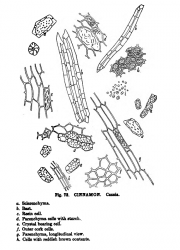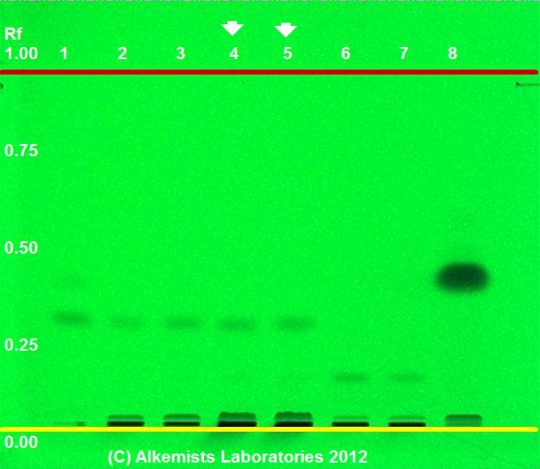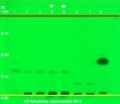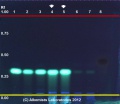Cinnamomum aromaticum (bark)
(→clear notes section) |
|||
| Line 41: | Line 41: | ||
verum (bark) authenticated by macroscopic, microscopic &/or TLC studies according to | verum (bark) authenticated by macroscopic, microscopic &/or TLC studies according to | ||
the reference source cited below, held at Alkemists Pharmaceuticals, Costa Mesa, CA. | the reference source cited below, held at Alkemists Pharmaceuticals, Costa Mesa, CA. | ||
| − | |||
| }} | | }} | ||
Revision as of 15:22, 24 April 2012
Contents |
Introduction
Introduction from Wikipedia, the free encyclopedia (http://en.wikipedia.org/wiki/Cinnamomum_aromaticum, retrieved 02/22/2012).
Cinnamomum aromaticum, called cassia or Chinese cinnamon, is an evergreen tree native to southern China, Bangladesh, Uganda, India, and Vietnam. Like its close relative Cinnamomum verum, also known as "Ceylon cinnamon", it is used primarily for its aromatic bark, which is used as a spice. In the United States of America, cassia is often sold under the culinary name of "cinnamon". The buds are also used as a spice, especially in India, and were once used by the ancient Romans.
The tree grows to 10–15 m tall, with greyish bark and hard elongated leaves that are 10–15 cm long and have a decidedly reddish colour when young.
The quoted text in this section was licensed for use under the Creative Commons ShareAlike License, version 3.0: http://creativecommons.org/licenses/by-sa/3.0/
Macroscopic Entries
Microscopic Entries
|
HPTLC Entries
|
Cinnamomum aromaticum HPTLC Species differentiation Lane Assignments Lane 2(3μl) (RJ33709CRB) Cinnamomum aromaticum / Cinnamomum cassia (bark); Lane 3(3μl) (RJ02109HTI) Cinnamomum aromaticum / Cinnamomum cassia (bark); Lane 6(3μl) (AW19410HTI) Cinnamomum verum (bark); Lane 7(3μl) (AW24509MRH) Cinnamomum verum (bark) authenticated by macroscopic, microscopic &/or TLC studies according to the reference source cited below, held at Alkemists Pharmaceuticals, Costa Mesa, CA. Stationary Phase Silica gel 60, F254, 10 x 10 cm HPTLC plates Mobile Phase toluene: ethyl acetate [9.5/0.5] Sample Preparation Method 0.3g+3mL CH3OH sonicate/heat @~50° C ~ 1/2 hr. Detection Method Image 1 UV 254 nm; Image 2 10% Ethanolic KOH Reagent 365 nm Source: Method Developed by Alkemists Laboratories. [2] |
Other Points of Interest
Cite error: <ref> tags exist, but no <references/> tag was found




